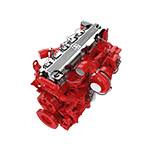Aug . 12, 2024 13:32 Back to list
Understanding the Importance of Brake Drum Shoes in Vehicle Safety and Performance
Understanding Brake Drum Shoes An Essential Component for Vehicle Safety
When it comes to vehicle safety, the braking system is one of the most critical components. Among the various elements that comprise this system are brake drum shoes, a crucial part in drum brake assemblies. Understanding their function, design, and maintenance can enhance vehicle performance and ensure safe driving.
What Are Brake Drum Shoes?
Brake drum shoes are curved friction elements that press against the inner surface of a brake drum to create the necessary friction for slowing down or stopping a vehicle. Typically made of a steel backing plate bonded to a friction material, these shoes come in pairs and are mounted on a pivot. When the driver applies the brake pedal, hydraulic pressure forces the shoes outward against the spinning brake drum, generating friction that slows the vehicle down.
How Brake Drum Shoes Work
The operation of brake drum shoes is fairly straightforward. When brakes are applied, the hydraulic system sends fluid to the wheel cylinders located within the brake drum assembly. This fluid pressure pushes the pistons in the cylinders, which in turn pushes the brake shoes outward. The friction material on the shoes makes contact with the wheel drum's surface, creating friction that decelerates the vehicle.
One key advantage of drum brakes is their ability to generate a high coefficient of friction, which allows for effective braking even in adverse conditions. Additionally, because the shoes retract slightly when the brake is released, drum brakes can be quieter and less prone to wear than disc brakes, although they are generally less efficient at dissipating heat.
brake drum shoes

Types of Brake Drum Shoes
There are various types of brake drum shoes that cater to different driving needs and vehicle types. Standard shoes are typically found in most passenger vehicles, while larger or heavier vehicles, such as trucks, often use heavy-duty shoes designed for greater strength and durability. Specialty shoes may also be employed in performance vehicles, where enhanced braking performance is crucial.
Maintenance and Signs of Wear
Regular maintenance of brake drum shoes is essential for vehicle safety. Wear indicators, usually in the form of grooves or grooves in the friction material, help drivers recognize when shoes need replacement. Common signs of worn brake shoes include squealing or grinding noises during braking, a decrease in braking efficiency, or the vehicle pulling to one side when braking.
To maintain optimal performance, it’s advisable to inspect brake shoes periodically, particularly before long trips or seasonal changes. Replacing shoes that have become too thin or worn not only ensures safety but can also prevent damage to the brake drum itself, which is more costly to repair or replace.
Conclusion
Brake drum shoes are a vital component of any vehicle's braking system. Understanding their function and maintenance can enhance performance and safety on the road. Drivers should remain vigilant for signs of wear and ensure regular inspections are performed as part of their vehicle maintenance routine. By taking these precautions, you can ensure that your brakes function effectively, providing peace of mind with every journey. Ultimately, a well-maintained braking system not only saves lives but also enhances the driving experience by ensuring reliable stopping power.
-
ROR Web Development: Build Fast, Scalable, Secure Apps
NewsAug.17,2025
-
Scania Brake Drums: OEM Quality for Optimal Safety & Durability
NewsAug.16,2025
-
R.V.I: Advanced Remote Visual Inspection for Precision
NewsAug.15,2025
-
Discover HYUNDA: Innovative Vehicles, Equipment & Solutions
NewsAug.14,2025
-
R.V.I: Unlock Advanced Insights & Real-time Performance
NewsAug.13,2025
-
Kamaz Brake Drum: Durable & Reliable for Heavy Duty Trucks
NewsAug.12,2025
